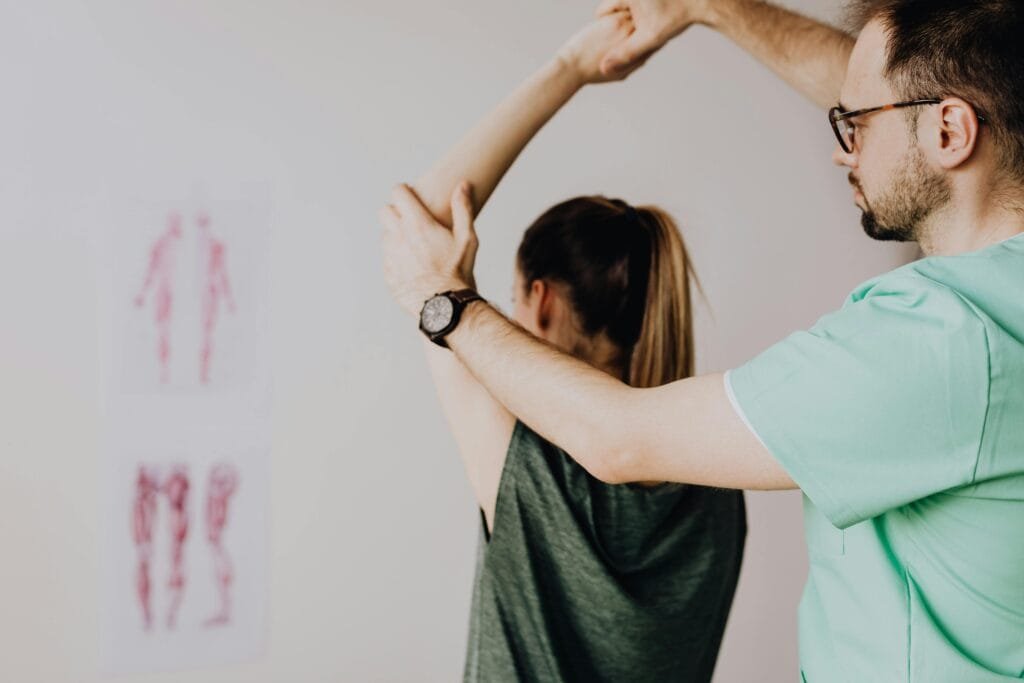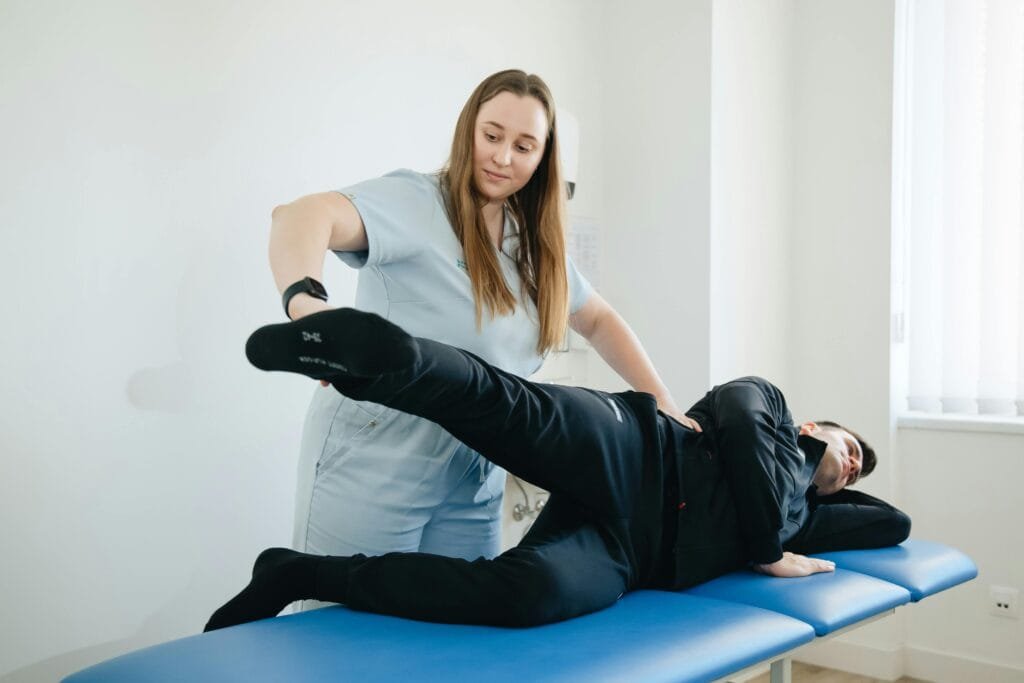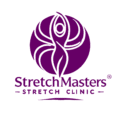Table of Contents
ToggleTired of Plateaus and Persistent Aches? Your Secret Weapon for Peak Performance Awaits.
Every dedicated athlete knows the grind: the relentless pursuit of faster times, stronger lifts, and greater agility. But what happens when you hit that frustrating plateau, or when nagging injuries become an unwelcome training partner? You push harder, but sometimes, the answer isn’t more intensity, but smarter movement and deeper recovery. If you’re yearning to unlock untapped potential, accelerate your recovery, and build a body that’s truly resilient, then professional assisted stretching isn’t just a trend—it’s your strategic advantage.
Forget the outdated, bouncy stretches of school sports. We’re talking about a precision-based practice, grounded in physiological science, designed to fundamentally upgrade your body’s capabilities. This isn’t just about feeling “looser”; it’s about engineering a more efficient, powerful, and injury-resistant athlete. Ready to discover how this transformative practice can redefine your athletic journey? Let’s delve into the science and the profound benefits.
What Exactly is Assisted Stretching and How Does It Unlock Athletic Excellence?
At its core, assisted stretching involves a trained professional guiding your body into stretches that go beyond your self-imposed limits. Imagine a master craftsman meticulously fine-tuning a high-performance engine; that’s what a stretch therapist does for your musculoskeletal system. They apply gentle, controlled external force, expertly navigating your body’s natural protective reflexes to achieve deeper, more effective muscle lengthening.
The effectiveness lies in manipulating two key physiological mechanisms:
- Overcoming the Stretch Reflex: Your muscles contain tiny sensory receptors called muscle spindles. When a muscle is stretched too quickly or too far, these spindles trigger a “stretch reflex,” causing the muscle to contract as a protective measure. A skilled assisted stretch practitioner understands how to gradually and safely engage the muscle, slowly taking it to its physiological barrier and then applying sustained pressure. This controlled approach helps to desensitize the muscle spindles over time, progressively allowing the muscle to lengthen further without triggering the protective spasm [9].
- Harnessing Proprioceptive Neuromuscular Facilitation (PNF): Many advanced assisted stretching techniques utilize PNF, which typically involves a brief, isometric contraction of the target muscle against the therapist’s resistance, followed by a relaxation phase. This “contract-relax” method capitalizes on the Golgi tendon organs (located in the tendons) and a neurological phenomenon called autogenic inhibition. When the muscle contracts, the Golgi tendon organs send a signal that causes the muscle to relax more profoundly immediately after the contraction, allowing for an even deeper stretch. This targeted neurological “reset” significantly enhances flexibility gains [1, 10].
By working intelligently with your body’s intricate systems, assisted stretching achieves a level of deep tissue release and range of motion improvement that traditional self-stretching simply cannot.
The Definitive Benefits of Assisted Stretching for Elevating Athletic Performance
The advantages of integrating professional assisted stretching are not merely anecdotal; they translate directly into measurable improvements in your athletic capabilities and overall physical well-being.
- Superior Flexibility and Unrestricted Range of Motion
The most immediate and fundamental benefit. Restrictive flexibility is a direct impediment to peak performance. Consider a swimmer with limited shoulder mobility, unable to achieve an optimal stroke, or a sprinter whose tight hip flexors restrict their stride length. Assisted stretching systematically elongates muscles and increases joint articulation, ensuring your body can move through its fullest, most efficient range.
Evidence consistently supports that consistent stretching interventions lead to significant improvements in range of motion, which is a critical determinant of athletic movement efficiency and power output [2]. Unlock those extra degrees of movement, and you unlock new levels of performance.
- Accelerated Muscle Recovery and Alleviated Post-Workout Soreness
Intense training inevitably leads to muscle fatigue, microscopic tissue damage, and the accumulation of metabolic byproducts, contributing to Delayed Onset Muscle Soreness (DOMS). Assisted stretching acts as a powerful recovery catalyst. By gently elongating the muscle fibres and promoting a transient increase in local blood flow, it facilitates the delivery of essential nutrients (like oxygen and amino acids) and the efficient removal of waste products (like lactic acid), significantly accelerating the repair process [3].
While the exact mechanisms are still being researched, the consensus among practitioners is that improved circulation and reduced muscle stiffness are key to speeding up recovery time and mitigating DOMS after strenuous workouts [4]. This means less downtime, greater training consistency, and quicker adaptation.
- Precision Injury Prevention: Building a More Resilient, Adaptable Body
Let’s address the crucial topic of injury prevention with precision. While the general efficacy of stretching to prevent all types of injuries across the board has been a subject of extensive scientific debate and often yields mixed results in broad studies [5], the evidence for targeted stretching, particularly assisted stretching, in preventing specific musculotendinous injuries (muscle strains and tears) is far more compelling.

How does assisted stretching provide this crucial protection?
- Addressing Muscle Imbalances: Many injuries stem from one muscle group being significantly tighter or weaker than its opposing group. Assisted stretching precisely targets and lengthens chronically tight muscles, restoring balance around joints and reducing compensatory stress on other structures.
- Enhancing Tissue Extensibility: By increasing the elastic capacity of muscle-tendon units, assisted stretching makes them less susceptible to overstretching or tearing during sudden, forceful, or eccentric movements common in sports [6]. For example, improved hamstring extensibility has been directly linked to a reduced risk of hamstring strains in athletes [6].
- Optimising Joint Mobility: Restricted joint movement forces surrounding muscles and ligaments to work harder and in suboptimal positions, increasing their susceptibility to injury. Assisted stretching ensures joints move through their full, natural range, distributing forces more evenly and reducing localised stress.
By proactively enhancing muscle balance, tissue extensibility, and joint mobility, you significantly reduce your risk of common athletic setbacks like hamstring strains, groin pulls, Achilles tendinopathy, and even certain types of back pain [6, 11, 12]. It’s about engineering your body to be less vulnerable to the inherent stresses of athletic performance.
- Elevated Mobility and Functional Performance
Beyond mere flexibility (the ability to achieve a position), assisted stretching cultivates mobility (the ability to move through that full range with control). This direct translation into functional performance is where athletes see profound benefits:
- Runners: Enhanced hip flexor and ankle dorsiflexion mobility translates into a more efficient, powerful stride.
- Combat Athletes: Improved hip rotation and thoracic spine mobility enable faster, more agile movements and striking power.
- Weightlifters: Greater shoulder external rotation and thoracic extension unlock deeper, safer squats, overhead presses, and snatches.
It’s about optimising every single movement pattern specific to your sport.
- Effective Pain Relief and Profound Muscle Tension Release
Chronic muscle tightness, knots (trigger points), and fascial restrictions can cause persistent discomfort and limit movement. Assisted stretching techniques, through sustained holds and precise pressure application, help to release these adhesions within the fascia (the connective tissue surrounding your muscles) and promote deep relaxation in overworked muscles [3]. This can provide significant, lasting relief from common athletic complaints like tight hips, stiff shoulders, and chronic lower back pain.
How Often Should Athletes Integrate Professional Assisted Stretching?
The optimal frequency for assisted stretching is highly individualised, depending on your sport, training volume, current flexibility, and specific athletic goals. However, general guidelines can be established:
Goal / Need | Suggested Frequency | Rationale |
General Maintenance & Wellness | 1 session every 1-2 weeks | To maintain existing flexibility, address minor accumulated tension, and support general musculoskeletal health, complementing a well-rounded training regimen. |
Targeted Performance Enhancement | 1-2 sessions per week | Ideal for athletes actively working to improve range of motion for specific movements, overcome flexibility plateaus, or significantly accelerate recovery during periods of moderate to high training intensity. |
Intense Training Cycles & Competition Prep | 2 sessions per week (or more, if advised) | Critical for mitigating cumulative fatigue, preventing excessive tightness that could lead to injury, and ensuring muscles are optimally prepared for peak performance and rapid recovery after demanding sessions or events. |
Post-Injury Rehabilitation & Chronic Pain Management | Varies based on therapist’s prescribed plan | Often more frequent initially (e.g., 2-3 times per week) to regain lost range of motion and reduce pain, gradually tapering as recovery progresses and functional mobility is restored, always in conjunction with medical/physiotherapy advice. |
Addressing Significant Chronic Tightness/Imbalances | 1-2 sessions per week (initially for several weeks) | For individuals with long-standing restrictions, consistent, targeted sessions are crucial to create lasting changes in muscle length and fascial mobility, followed by maintenance. |
Remember, consistency is the bedrock of lasting adaptation. Even infrequent but regular sessions are vastly more effective than sporadic interventions. For tailored advice, a professional stretch therapist will conduct a thorough assessment to design a bespoke program aligned with your unique athletic demands.
What to Expect from a Professional Assisted Stretching Session: A Guided Experience
Stepping into a professional assisted stretching session is an experience far removed from self-stretching. Here’s a typical progression:
- Initial Consultation & Assessment: Your session begins with a discussion of your athletic background, training regimen, any current discomfort or injuries, and your specific flexibility goals. The therapist will then perform a comprehensive movement assessment, identifying muscle imbalances, areas of restriction, and postural deviations. This diagnostic step is crucial for tailoring the session.
- Targeted Warming Up (Optional/Brief): Depending on your muscles’ initial state, a brief, gentle warm-up might precede the stretching to prepare the tissues.
- The Stretching Process: You will lie or sit comfortably on a padded table. The therapist will systematically move your limbs and body through various stretches, using their body weight, leverage, and precise hand placements to apply the necessary external force. They will continuously communicate with you, asking about your comfort levels and sensations.
- PNF Techniques: You’ll likely be asked to gently contract a muscle against the therapist’s resistance for a few seconds, then relax, allowing for a deeper stretch. This is the hallmark of effective assisted stretching.
- Sustained Holds: Some stretches may involve holding a position for a prolonged period to encourage fascial release and sustained muscle lengthening.
- Breathing Integration: The therapist will often guide your breathing, encouraging deep exhalations during the stretch to promote muscle relaxation and deepen the release.
- Post-Session Feedback & Recommendations: After the session, the therapist will provide feedback on your progress, highlight areas that need continued attention, and offer advice on self-care, hydration, and how to integrate the benefits into your training. You might also receive a few simple, targeted stretches to perform at home.
The entire process is collaborative, safe, and focused on optimising your body’s mechanics.
What Should I Wear or Prepare for an Assisted Stretching Session?
Preparing for an assisted stretching session is pretty straightforward. You want to be comfortable and able to move freely.
- Clothing: Opt for athletic wear that allows for a full range of motion. Think leggings, shorts, t-shirts, or athletic tops. Avoid anything too restrictive or with a lot of zips or buttons that might dig into you.
- Hydration: Make sure you’re well-hydrated before your session. Optimal hydration is vital, as well-hydrated tissues are more pliable and responsive to stretching, allowing for deeper and more effective releases. Avoid excessive caffeine or alcohol before your session, as they can contribute to dehydration.
- Food: Don’t come on a completely empty stomach, but avoid a heavy meal right before your session. A light snack a couple of hours beforehand is usually fine.
- Communicate: Be prepared to communicate openly with your therapist. Let them know about any tight spots, previous injuries, or areas of discomfort. The more information they have, the better they can tailor the session to you.

Why is Professional Guidance Indispensable for Assisted Stretching?
While the concept of assisted stretching might seem simple, the effectiveness and safety are entirely dependent on the expertise of the practitioner. You wouldn’t trust complex medical advice from an amateur, and your body deserves the same level of care. Here’s why professional guidance is non-negotiable:
- Deep Anatomical & Physiological Expertise: A qualified professional possesses an intricate understanding of musculoskeletal anatomy, biomechanics, and the nervous system’s response to stretch [14]. They know precise muscle origins, insertions, fibre directions, and how each joint functions, ensuring effective and safe stretching without stressing ligaments or joint capsules [9].
- Precise Technique & Leverage: Knowing the correct angles, lines of pull, and appropriate force to apply is an art. Incorrect leverage or excessive force can lead to muscle strains, overstretching, or injury. Professionals are trained to work with your body, not against it.
- Individualised Assessment & Program Design: Generic stretching routines yield generic results. A professional conducts a thorough assessment to identify your unique imbalances, limitations, and potential compensatory patterns. They then design a highly targeted session specifically for your body and your athletic demands.
- Safety & Communication: They are adept at interpreting your body’s subtle cues and your verbal feedback [13]. They know the critical distinction between a productive, beneficial stretch and damaging pain, ensuring you are always within a safe and effective range.
- Maximising Efficacy with Advanced Techniques: Techniques like PNF and specific fascial release methods require expert application. A professional knows how to elicit the deepest neurological and mechanical responses for accelerated gains in flexibility and mobility [1, 10].
Seeking a qualified stretch therapist is an investment in your body’s longevity and performance. Look for practitioners with robust qualifications such as Physiotherapy degrees, Chiropractic qualifications, or Level 3 and above Fitness and Personal Training certificates with specialised training in assisted stretching modalities. It’s also crucial that they are registered with relevant regulatory bodies such as the Health and Care Professions Council (HCPC), the Chartered Society of Physiotherapy (CSP), the Chartered Institute for the Management of Sport and Physical Activity (CIMSPA), or regulated by Ofqual where applicable. Reputable clinics prioritize highly trained professionals who meet these standards.
Conclusion: Elevate Beyond Limits. Define Your Athletic Legacy.
Assisted stretching is not merely a supplementary activity; it is a foundational pillar for any athlete committed to achieving peak performance, sustained health, and career longevity. By systematically improving flexibility, optimising range of motion, accelerating recovery, and critically, providing targeted injury prevention, it empowers your body to move more efficiently, powerfully, and without limitation.
The journey to your athletic zenith is paved with consistent effort and intelligent strategies. Don’t let muscular restrictions or nagging aches dictate your potential. Invest in professional assisted stretching – a powerful, evidence-backed practice that will redefine your capabilities and unleash the athlete you were always meant to be. Experience the profound difference that expert-led stretch therapy can make. Explore how StretchMasters® can help you achieve your athletic goals. Your ultimate performance awaits.
References
[1] Sharman, M. J., Cresswell, A. G., & Riek, R. (2006). Proprioceptive neuromuscular facilitation stretching: mechanisms and clinical implications. Sports Medicine, 36(10), 929-939. https://pubmed.ncbi.nlm.nih.gov/17052131/
[2] Medeiros, D. M., & Lima, C. S. (2017). Influence of chronic stretching on muscle performance: Systematic review. https://pubmed.ncbi.nlm.nih.gov/28527424/
[3] Denton Sports Chiropractic. (2024, September 2). The Many Benefits of Assisted Stretching. Retrieved from https://dentonsportschiropractic.com/2024/09/02/the-many-benefits-of-assisted-stretching/
[4] Cheung, K., Hume, P. A., & Maxwell, L. (2003). Delayed onset muscle soreness: Treatment strategies and performance factors. Sports Medicine, 33(2), 145-164. https://pubmed.ncbi.nlm.nih.gov/12617692/
[5] Small, K., Naughton, S., & Matthew, L. (2008). A systematic review into the efficacy of static stretching as part of a warm-up for the prevention of exercise-related injury. Research in Sports Medicine, 16(3), 213-231. https://www.tandfonline.com/doi/pdf/10.1080/15438620802310784
[6] Arnason, Á., Andersen, T. E., Holme, I., Engebretsen, L., & Bahr, R. (2008). Prevention of hamstring strains in elite soccer: an intervention study. British Journal of Sports Medicine, 42(9), 708-711. https://pubmed.ncbi.nlm.nih.gov/17355322/
[7] Physiopedia. (n.d.). Stretching. Retrieved from https://www.physio-pedia.com/Stretching
[8] Konrad, A., & Tilp, M. (2014). Increased range of motion after static stretching might be due to changes in muscle stiffness. Clinical Biomechanics, Volume 29, Issue 6, June 2014, Pages 636-642. https://www.sciencedirect.com/science/article/abs/pii/S0268003314000989
[9] Behm, D. G., & Chaouachi, A. (2011). A review of the acute effects of static and dynamic stretching on performance. European Journal of Applied Physiology, 111(11), 2633-2651. https://pubmed.ncbi.nlm.nih.gov/21373870/
[10] Hindle, K. B., Whitcomb, T. J., Briggs, L., & Hong, J. (2012). Proprioceptive Neuromuscular Facilitation (PNF): Its Mechanisms and Effects on Range of Motion and Muscular Function. Journal of Human Kinetics, 31, 105–115. https://psjd.icm.edu.pl/psjd/element/bwmeta1.element.-psjd-doi-10_2478_v10078-012-0011-y
[11] Alonso-Sal, A., Alonso-Perez, J. L., Sosa-Reina, M. D., García-Noblejas-Fernández, J. A., Balani-Balani, V. G., Rossettini, G., & Villafañe, J. H. (2024). Effectiveness of Physical Activity in the Management of Nonspecific Low Back Pain: A Systematic Review. Medicina, 60(12), 2065. https://doi.org/10.3390/medicina60122065
[12] Unlock Your Full Potential: How Assisted Stretching Boosts Fitness Performance. (n.d). https://stretchmasters.co.uk/assisted-stretching-for-fitness-performance/
[13] Discover the Benefits of Assisted Stretching for Better Performance and Recovery. (n.d). https://helpmestretch.co.uk/assisted-stretching-for-fitness-performance/
Disclaimer:
The content on this blog is provided for general information and wellness purposes only. It should not be considered medical advice, diagnosis, or treatment. StretchMasters® services, including assisted stretching, are intended to support overall wellbeing and are not a substitute for professional healthcare guidance.
Always consult with a qualified medical professional before starting any new therapy, especially if you have existing health conditions. StretchMasters®, its parent company Skuil Ltd, and affiliated clinics accept no liability for decisions made based on this content.
We strive to ensure that all information is accurate and up to date; however, due to the evolving nature of health research, we cannot guarantee that all content reflects the latest evidence. Additionally, external links shared in blog posts may change, be updated, or become inactive over time without notice.
Opinions expressed in individual blog posts are those of the author and do not necessarily reflect the views or policies of StretchMasters® or its subsidiaries. Any reference to third-party organisations, websites, services, or products is not an endorsement.
